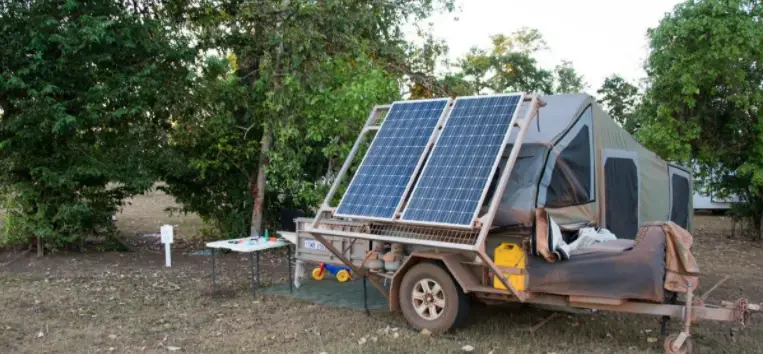
There are tons of solar panel options for camper trailers.
In this buyer's guide, we have narrowed everything to the 9 best portable solar panels for camper trailers based on size, output and cost.
Do you know which ones they are?
Let's check them out
9 Best Portable Solar Panels For Camper Trailers
Zamp Solar Kit1005 170-Watt Roof Mount Solar Panel Kit

⦁ Easy Installation: The innovative Omni-mount frame allows you to install the panel anywhere you need to and effortlessly add on more panels in series, while stainless steel mounting hardware ensures durability. A unique feature Zamp offers is easy release mounting feet that lets you quickly unclip your panel without removing the actual hardware.
⦁ Additional Features: This roof mount kit comes with mounting hardware, a pre-assembled wiring harness, and a 30-amp 5-stage PWM charge controller.
⦁ Long-term Warranty: Zamp offers a 25-year warranty on this product, ensuring your purchase will last you for the long-haul!
⦁ Price: $700
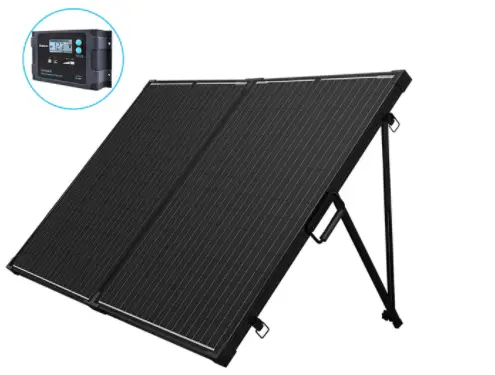
⦁ High Efficiency: Premium panels offer high efficiency, even in low-light conditions.
⦁ Increased Durability: The stand is made of corrosion-resistant aluminum and Renogy has even updated the leg adjustments to allow you to tighten, loosen, and angle the suitcase legs with ease.
⦁ Added Features: The suitcase comes with a protective casing to ward off scratches and dust during storage. The panel itself is equipped with a heavy-duty handle to make carrying and setup easier. Most importantly, the suitcase comes with a pre-installed Voyager charge controller.
⦁ Price: $600
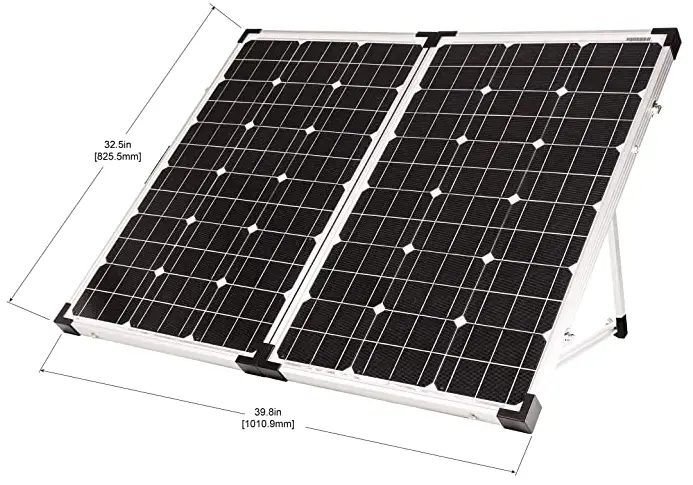
⦁ Versatile Charging Connectors: Anderson-style battery connectors allow you to quickly and easily change the charging accessory connected to the panel. This allows you to use one panel in combination with your RV, travel trailer, generator, and car, boat, or ATV batteries.
⦁ Add-ons: This kit includes a 10-amp charge controller and a 25-year SAE and XLR style plug adaptor.
⦁ Easy Storage: This legs fold in and the panel folds in half to fit inside the included heavy-duty nylon case for storage.
⦁ Price: $455
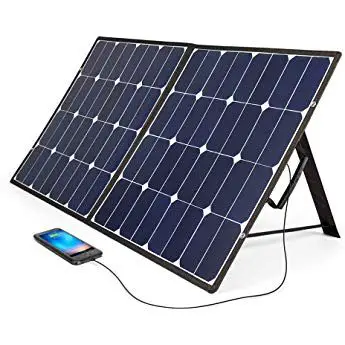
⦁ Updated Solar Cell Technology: BougeRV combines SunPower Solar Cells and an increased number of strands between solar cells to reduce cell breakage, expand the overall panel lifespan, and increase efficiency by 23-25%.
⦁ Easy Installation: The flexibility of the panel make for easy placement on any shaped surface. This flexible solar panel is pre-equipped with three reinforced metal mounting holes at each corner.
⦁ Bargain Choice: The price of this panel varies by marketplace, but is always the budget-option. You can typically snag this panel for around $200.
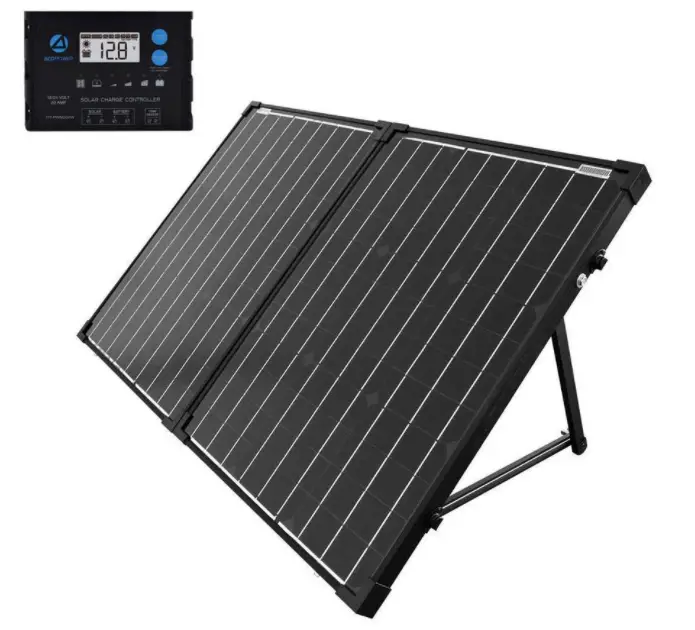
⦁ Installation Ready at Purchase: This folding panel comes as a pre-wired kit ready to be connected to a generator or battery.
⦁ Compact and Lightweight: ACOPOWER panels are compact and framed in lightweight aluminum making for easy transport and storage.
⦁ Includes Accessories: While this solar kit lacks a charge controller, it does include a protective case, M4 connectors, and a pre-attached stand.
⦁ Price: This panel is highly cost-effective, coming in at just $240
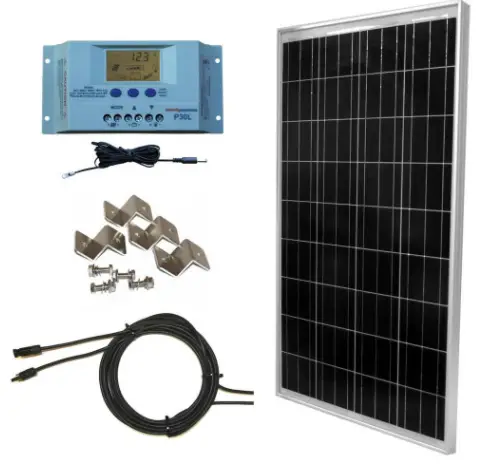
⦁ Easy installation: Installing this kit is easy with provided manual, mounting brackets, and fastener sets.
⦁ Add-ons: This kit includes everything you need to get started on your solar journey. The kit has a P30L LCD display solar charge controller with a battery temperature sensor, 40 ft of 12 AWG solar cable, all connectors, and mounting hardware. There is even the option to add on an AGM battery at an extremely reasonable price.
⦁ Budget-friendly: Polycrystalline technology means a slight decrease in efficiency, but it does lead to a cost-effective solution to your energy needs. This solar kit starts at only $250, or $440 with a 100 Ah AGM battery included.
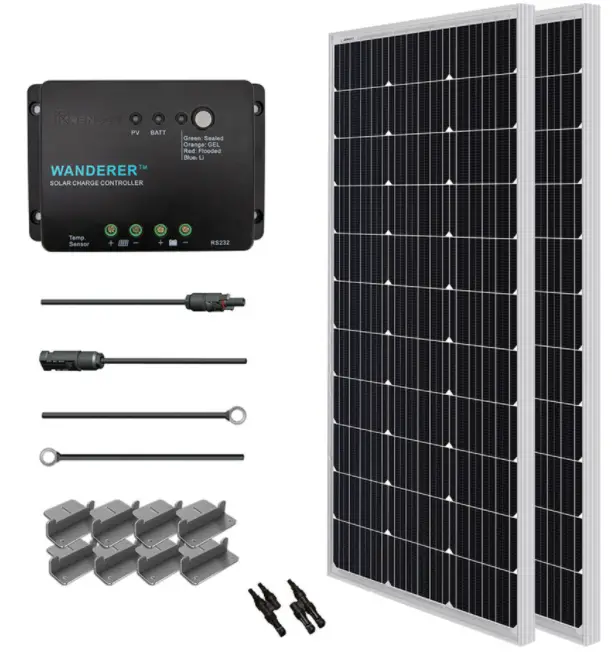
⦁ Upgraded Charge Controller: The updated controller features a negative grounding mechanism and multiple protective applications, ensuring broader, safe off-grid use.
⦁ Add-ons: In addition to the updated charge controller, this kit also comes with a 20ft 10AWG MC4 adaptor kit, an 8ft 10AWG tray cable, a set of MC4Y connectors, and two sets of Z-brackets.
⦁ Increased Durability: Renogy has ensured the longevity of this roof mounted kit with a corrosion-resistant aluminum frame optimal for outdoor use.
⦁ Price:$306
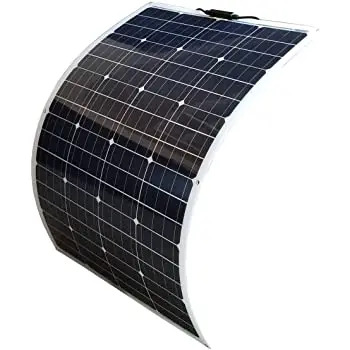
⦁ Varied Charging Capabilities: This panel can charge more than just your battery. ALLPOWERS equips this panel with a dual USB port with iSolar Technology capable of charging 5v gadgets such as a smart phone, 18v gadgets such as a laptop, and 12V gadgets such as a car or deep cycle battery.
⦁ Solar Cell Technology: Solar Cell technology enables increase of up to 23% in charging efficiency.
⦁ Slim Design: The flexible panel is 1/3rd lighter than the average silicon panel, while still producing the same output. Its flexible design also allows it to be rolled up for space-saving storage.
⦁ Price: $180
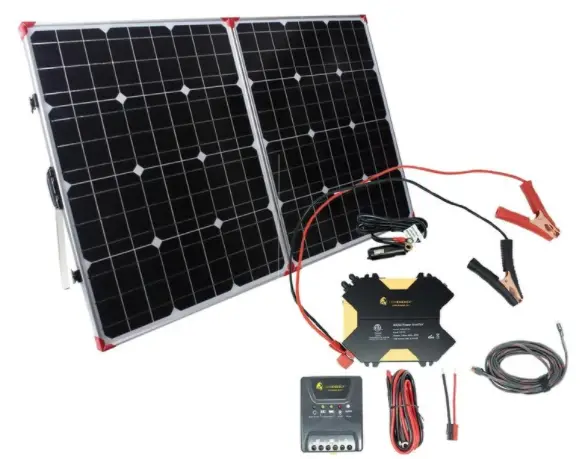
⦁ Add-ons: This plug-and-play DIY solar kit includes a lithium-ion battery, inverter, solar panel, charge controller, and all necessary cables, connectors, and other components.
⦁ Excellent Customer Service: Sometimes it is the little things that count. Lion Energy not only sets you up with everything you need to start producing green energy today, they also provide you with lifetime customer support, free shipping, and no sales tax.
⦁ Expandable: This solar array supports series add on should you decide to increase your solar ability down the line.
⦁ Price: This kit starts at $449. The price varies on your selection of included battery.
How to Choose the Best Portable Solar Panels for Your RV
There are a few quality ratings and features to consider when choosing the best solar panel array for your setup. Below, we cover size, durability, installation, and additional features.
How Much Wattage Do You Need?
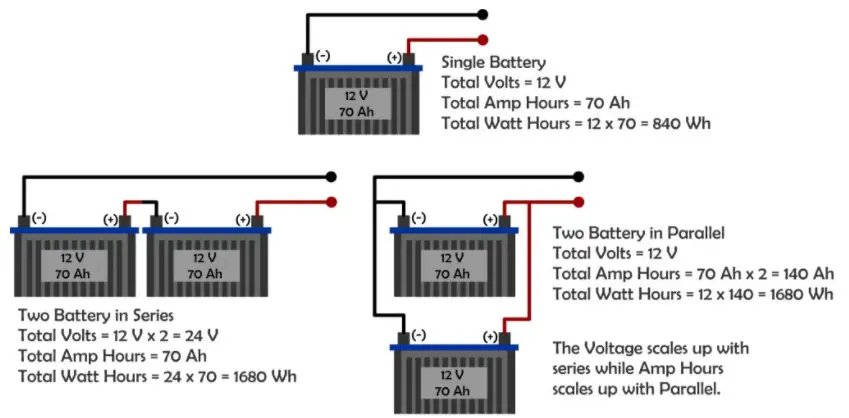
Solar panel size is measured by the wattage it is capable of outputting. When determining what size solar panel your setup needs, you first want to reference the size of the battery you are charging. (Be sure to use our RV Batteries for Boondocking guide to figure out what size battery you need in your camper trailer or RV.)
As a rule of thumb, under ideal circumstances a 12-volt, 100-watt solar panel will produce 30 Ah per day. This means it would take just over three days to fully charge a 100 Ah battery with a 100-watt solar kit, whereas a 300-watt solar system could recharge this battery in less than two days.
The next thing to take into consideration is usage. Once you know how long it will take you to charge your battery at 100-watts, you can factor in the rate at which you go through a discharge cycle.
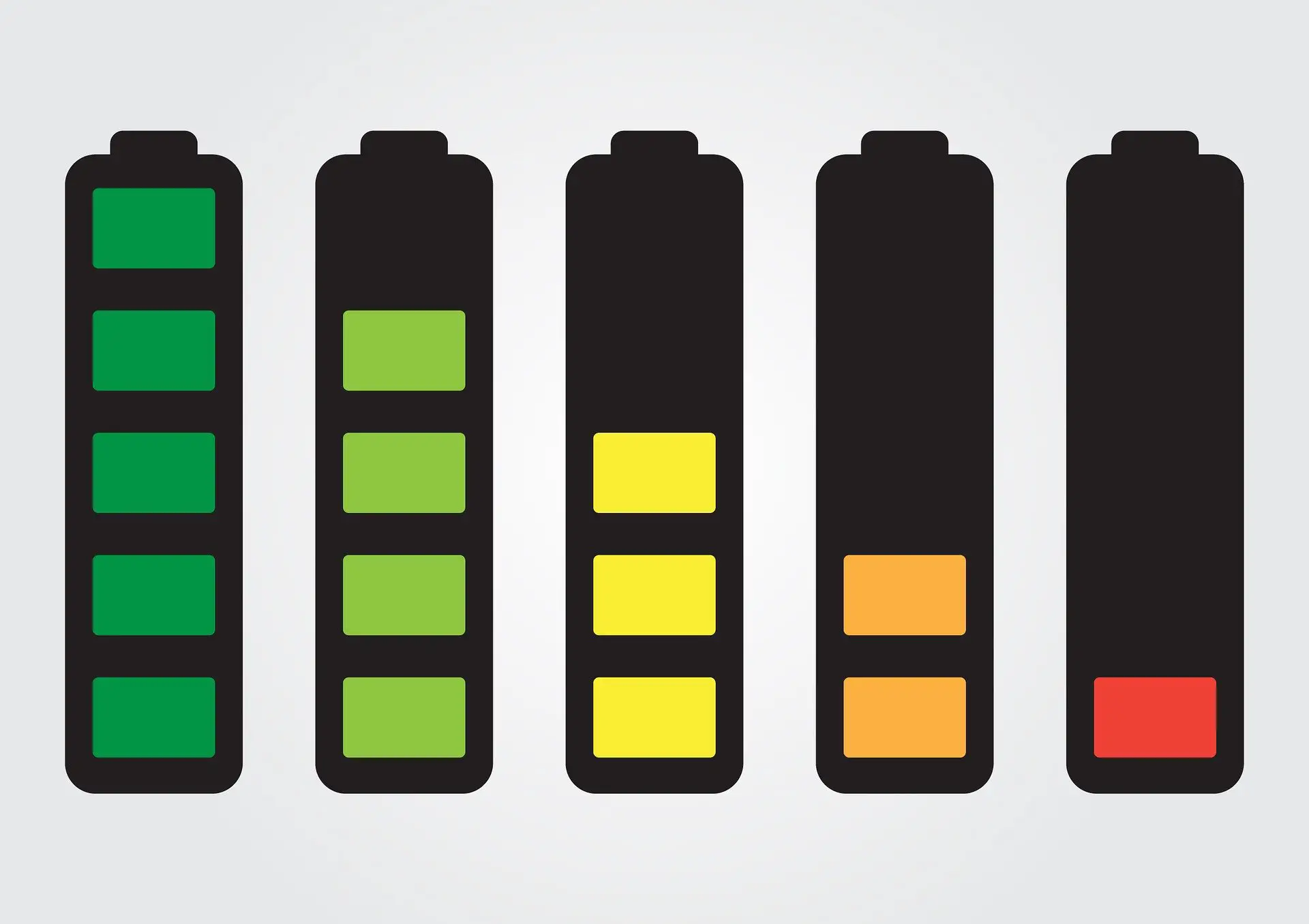
If you deplete a 100 Ah battery rated for 80% discharge in one day, that means you need to produce 80 Ah of charge per day. You want to round this number up to account for cloudy days, non-ideal camping spots with limited sun exposure, and high energy-drawing days.
For our example, the minimum amount of solar you would want to purchase would be 300-watts to produce 90 Ah of charge in a 24-hour cycle. In my opinion, it would even be worth sizing up to 350-watts (150 Ah) to be sure you never run out of charge.
Weatherproof and Durability
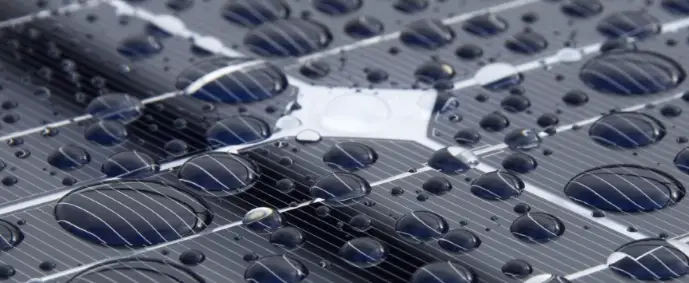
It is important to check the design qualifications of a solar panel kit before purchasing. These qualifications will tell you how well your panel can stand up to the elements, and therefore will outline its longevity as well.
There are three industry standard tests that provide these ratings. There is the Damp Heat Test which measures the effect of moisture and humidity on overall efficiency. Next is the Thermal Cycling Test which checks for resistance against drastic temperature fluctuations.
Last, is the Dynamic Loading Test. This test measures how much weight the panel can hold before tipping or cracking- an essential rating to check if you live somewhere that experiences heavy snows!
Additional Features and Installation
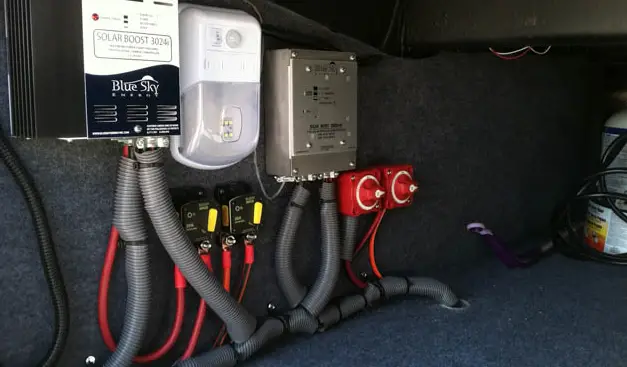
Once you have determined the type and size of the panel you are looking for, you can then take into consideration the extra features.
The most important of the additional features to look for is whether or not the panel comes with a charge controller. These are absolutely necessary for running your solar array and can be quite pricey! Some kits will also include items needed for installation such as wire harnesses, mounting hardware, and fastener kits.
Some panels have the ability to be wired in series. This is handy if you think you may need to add extra wattage in the future. Instead of having to buy an entirely new panel, you can simply wire two panels together. This also cuts down and panel size, making ground panels easier to transport and carry.
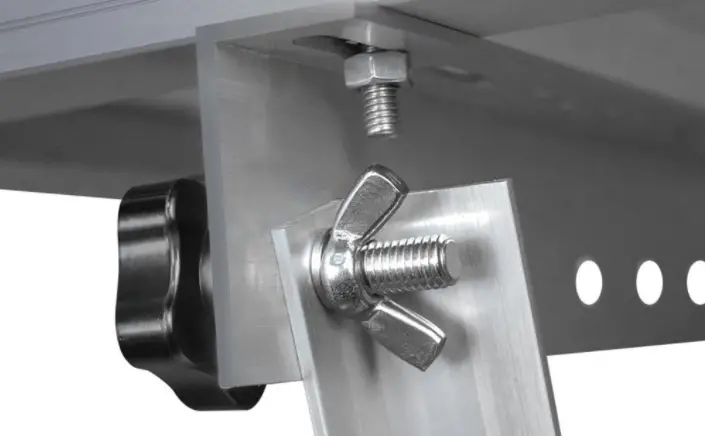
If you are purchasing a roof-mounted panel, you may want to check if the panel comes with pre-drilled mounts attached. While not necessary, this will make installation that much easier. It is also helpful to note where the mounts are on the panel to make sure you can line the mount up to the main support beam on your roof.
For ground panels, you may prefer a folding or suitcase panel to ease transport and storing your panels. Select suitcase panels even come with a protective storage bag with a handle to make carrying the solar panels easier. Folding panels also cut down on the required storage space.
What Are the Different Types of Solar Panels?
There are two main types of solar panels, mono- and polycrystalline. These types are based on the material used to produce the main cell.
There are a few variations on design options branching from there, including flexible, rigid, ground mounted, and rooftop mounted panels.
Monocrystalline VS Polycrystalline Panels

Solar panels are made by pouring melted silicon into bars and then cutting this mold into wafers. The difference in mono and poly panels is the purity of the silicon mixture used in this process. Monocrystalline panels are made from single-crystal silicon, while polycrystalline panels are made by melting multiple silicon sources together.
While polycrystalline panels are more cost-effective, they are far less efficient as the electrons have restricted space for movement inside the panel due to the multiple silicon crystals.
The panels have vaguely differing aesthetics. A polycrystalline panel has a blue tint and the cells are cut in ninety-degree angle corners. A monocrystalline panel is black and has cells cut into squares with slightly rounded corners. These aesthetics have no effect on efficiency. However, the cell shape does render the monocrystalline panel less sustainable as the silicon corners are shaved away in the production process.
Ground Mounted VS Rooftop Mounted Panels
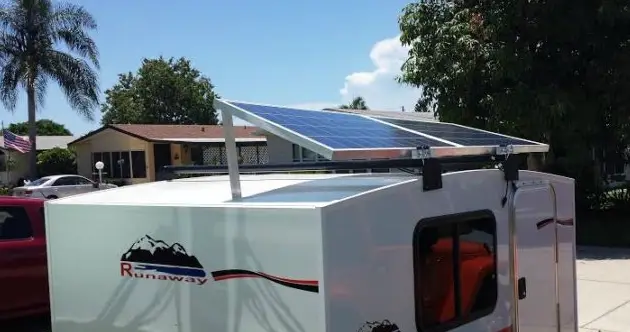
The difference in ground mounted panels and rooftop mounted panels is fairly self-explainable. A ground mounted panel is stowed away somewhere in your RV or travel trailer until you are parked somewhere and ready for use.
It is set up somewhere next to your camper on a tri-pod mount or kickstand. A rooftop mounted panel is installed on the roof of your RV, meaning it does not require any set up when you arrive at your campsite.
There are pros and cons to both set ups. Ground mounted panels require virtually no installation and allow you more freedom to position your panels for maximum sun exposure. With long enough wiring, a ground panel can even allow you to park your RV in the shade while still placing your solar panel in a sunny location.
The downside to a ground panel is the set-up time and the ability for it to break by falling over. They are also more susceptible to theft than a panel permanently mounted to your rig.
A rooftop panel requires a lengthier installation and will come into play more when choosing parking places as you will have to park in an open exposure space for maximum charging. These panels are also susceptible to cracking from rocks flying while driving and low hanging branches. These panels require no setup upon arrival at your campsite, take up no extra storage space, and will even begin charging during your drive out.
Flexible VS Rigid Panels
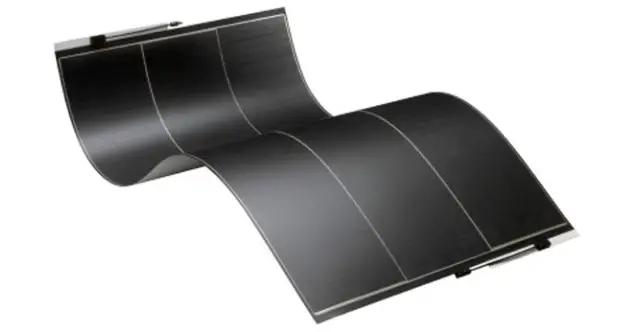
Solar panels are sold in both flexible and rigid molds. Outside of roll-away solar panels that are able to be stored in a backpack for small device charging, this feature only applies to roof-mounted panels.
A flexible panel gives you the ability to roll the panel out over a rounded or pitched rooftop. They are a sleeker, more discreet panel that can be (carefully) installed without drilling any holes into your roof by gluing them in place. They are a fraction of the weight of rigid panels, making them a good option for weight-restricted trailers, pop-top campers, and vans.
Flexible panels are far less durable than their rigid counterparts. These lightweight panels have even gone flying off RVs without proper installation.
Rigid panels are mounted in a more reliable fashion, and the panels are vastly more durable themselves. These panels are typically mounted on roof racks versus being glued down. The benefit of this is that it allows airflow under the panels, preventing damage to both your roof and your solar panel due to overheating.
The rigid panels are the tried-and-true method, can stand up to varying weather conditions, and are the budget option of the two.
The downside to rigid panels is that they are heavy, adding to your overall weight and making it somewhat more difficult to transport and install. Rigid panels may also minimally reduce your height clearance due to the mounting brackets and inability to conform to the shape of your rig.
Common FAQ
Solar energy is a practical and straightforward system to learn. However, if you are new to the game you may still have some unanswered questions.
We answered three of the most common questions our customers bring to us below.
Is There Anything I Should Not Power Using a Solar Panel in a RV or Trailer?
While everything in your RV can technically be ran off of solar power, there are some things you should try to not use inside a camper in order to reduce the risk of draining your battery completely dry.
Solar power works much like a trickle charger, meaning that it will refill your battery over a long period of time. However, high energy drawing appliances will drain your charge faster than you can compensate for. This includes items like drying machines, air conditioners, and electric stoves/ovens.
How Can I Maximize Power Efficiency When Using Portable Solar Panel Kits?
Keeping your panels clean of any dust and debris will help to maximize your power efficiency while using portable solar panel kits.
It is also important to pay attention to the angle of the sun. With a ground panel, this may mean moving the panel throughout the day. For roof mounted panels, you can instill a tilt- a mechanism that will manually or automatically change the angle of the panel mount to increase sun exposure.
Lastly, you can use a battery monitor to track which devices have a high-power draw. You can use this knowledge to create a power budget for yourself to ensure you aren’t overusing your stored power on cloudy/rainy days or at night when your panel has stopped outputting charge.
Do I Need a Battery, Charge Controller, or an Inverter?
While some solar panels have the ability to plug directly into small gadgets such as laptops and cell phones, it is recommended to attach a battery to your solar array. This allows you to store any charge produced.
This also allows you to run a multitude of applications by connecting to an inverter, which will transform the DC energy produced to an AC output. As most household items run on AC power, it is necessary for most people’s needs to install an inverter.
A charge controller is also necessary to protect both your solar array and your battery. The controller monitors battery temperature, voltage, amp hours, and charge/discharge cycles. It uses this information to automatically switch between charging modes for the safest, most efficient daily charging cycle.
